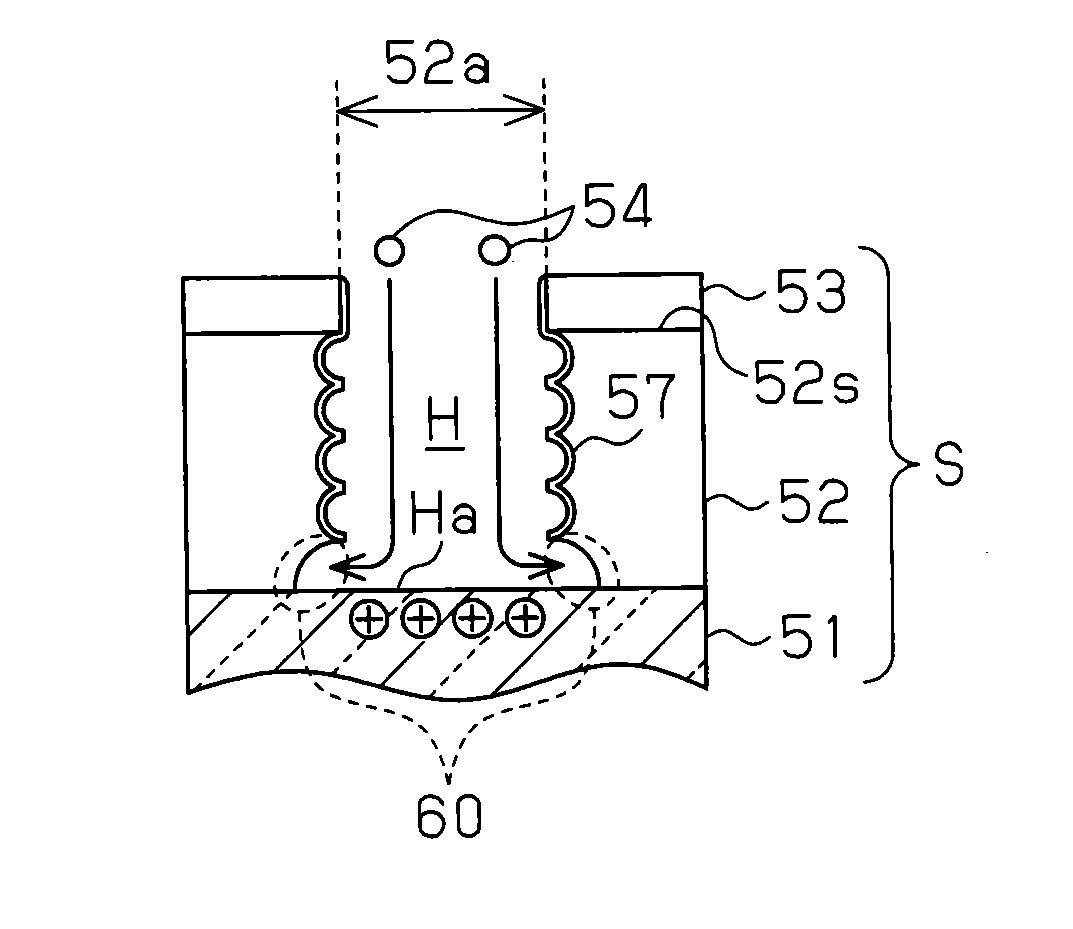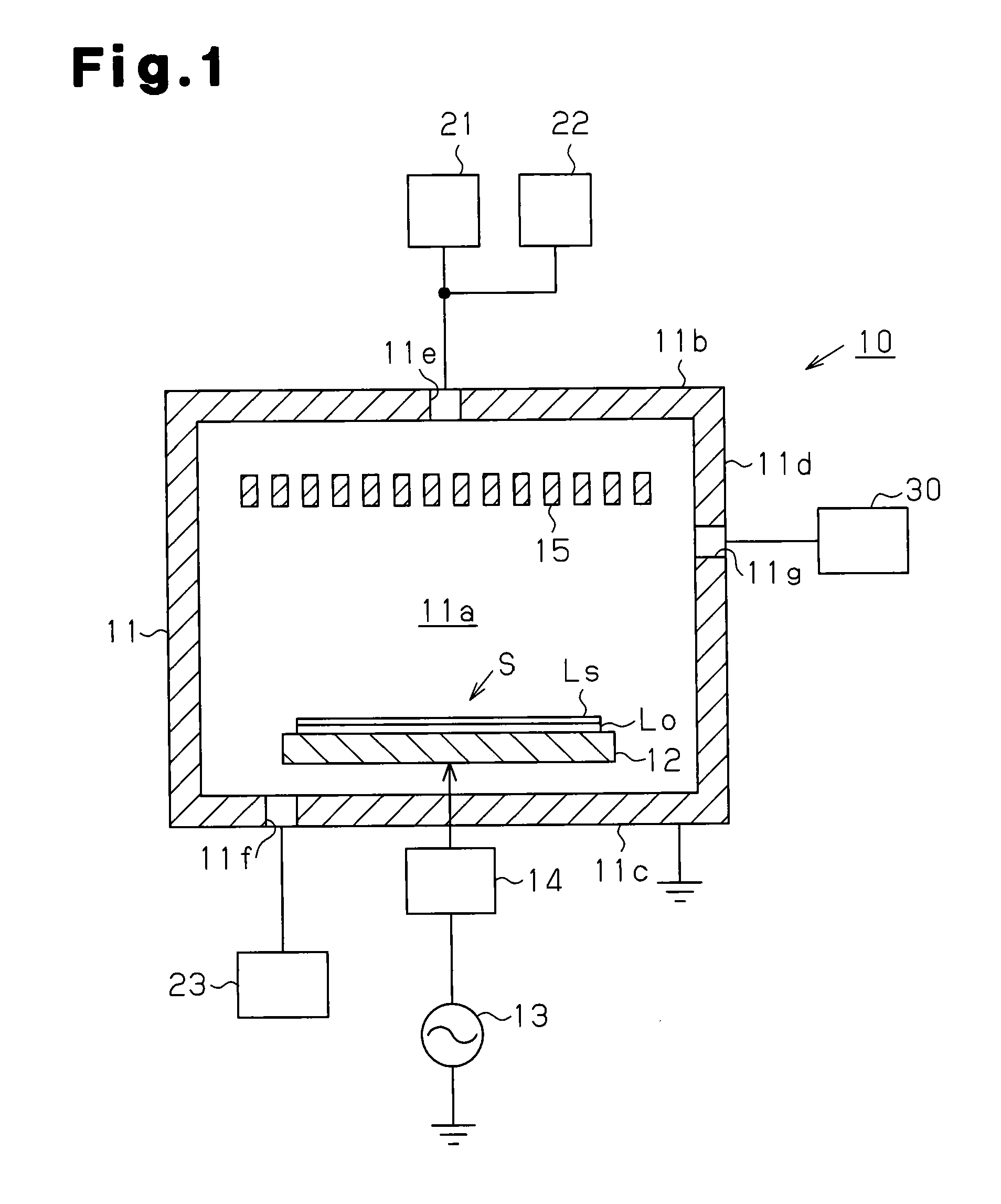Dry etching method
a technology of dry etching and etching plate, which is applied in the testing/measurement of individual semiconductor devices, semiconductor/solid-state devices, instruments, etc., can solve the problems of adversely affecting the functions of mems devices, unable to obtain desired light reflection at the opening ha, etc., and suppresses the generation of notch. , the effect of positive charging of the exposed par
- Summary
- Abstract
- Description
- Claims
- Application Information
AI Technical Summary
Benefits of technology
Problems solved by technology
Method used
Image
Examples
Embodiment Construction
[0034]A dry etching method according to one embodiment of the present invention will now be described with reference to FIGS. 1 to 3. In this embodiment, a method for performing plasma etching on a silicon layer will be described.
[0035]FIG. 1 schematically shows the structure of a plasma etching device that performs etching using the plasma etching method of the present embodiment. As shown in FIG. 1, a substrate stage 12, on which a substrate S that is subject to processing is placed, is arranged in a plasma generation region 11a formed in a vacuum container 11 of the plasma etching device 10. The substrate S is a substrate for an MEMS device, for example, and includes a silicon oxide layer Lo, which serves as an etching stopper layer, and a silicon layer Ls, which is stacked on the silicon oxide layer Lo. The substrate S is arranged on the substrate stage 12 with the silicon oxide layer Lo being located at the lower side.
[0036]A high frequency power supply 13 is connected to the s...
PUM
 Login to View More
Login to View More Abstract
Description
Claims
Application Information
 Login to View More
Login to View More - R&D
- Intellectual Property
- Life Sciences
- Materials
- Tech Scout
- Unparalleled Data Quality
- Higher Quality Content
- 60% Fewer Hallucinations
Browse by: Latest US Patents, China's latest patents, Technical Efficacy Thesaurus, Application Domain, Technology Topic, Popular Technical Reports.
© 2025 PatSnap. All rights reserved.Legal|Privacy policy|Modern Slavery Act Transparency Statement|Sitemap|About US| Contact US: help@patsnap.com



